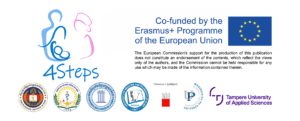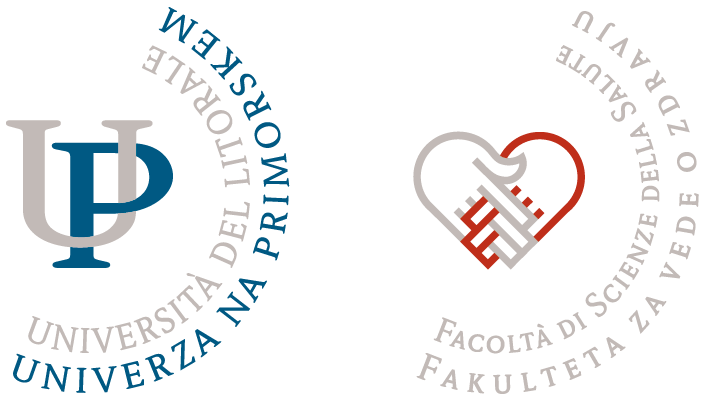15.11.2019 – 14.10.2022
University of Ljubljana
University of Medicine and Pharmacy at Ho Chi Minh City
Namdinh University of Nursing
The University of Health Sciences of Cambodia
Health Science Institute of Royal Cambodian Armed Forces
Assoc. Prof. Boštjan Žvanut (SICRIS, ResearchGate)
Assist. Prof. Patrik Pucer (SICRIS, ResearchGate)
LINKS:
WHO targets by 2030: to reduce the global maternal mortality ratio to less than 70/100 000 live births and end preventable deaths of newborn children, aiming to reduce neonatal mortality to 12 per/1000 live births. Maternal and neonatal mortality rates in Vietnam have decreased significantly being 2015 54/100,000 and 11/1000 and in Cambodia 161/100,000 and 16,3/1000. (In Finland 3/100,000 and 1,8/1000). Economic growth, which has been rapid in both countries, has positive impact to maternal and neonatal mortality, but not sufficient. Most effective way to cut the number of preventable deaths and morbidity of mothers and newborns is to strengthen midwives’ competences by developing their education. (Definition of skilled health personnel providing care during childbirth: the 2018 joint statement by WHO, UNFPA, UNICEF, ICM, ICN, FIGO and IPA, 2018; The Lancet’s series of Midwifery, 2014.)
To prevent complications most countries choose to move child births to hospitals so that medical help is available in case of an emergency. In partner countries long distances, bad roads, traffic jams pose a risk of not reaching the hospital in time. Pre-pregnancy and post-natal care and guidance is insufficient in both countries. That is strongly connected to maternal and newborn mortality. The current situation is worse for mothers in rural areas.
Needs analysis:
There is a great need to strengthen midwifery care by developing education. Both countries use the governmental midwifery curriculum. There is a need to update them. They have an ambitious target to change it to competence based, and develop it to international level, including full scope midwifery competences. The educational level of teachers varies from Master’s degree to experienced midwives from hospitals. Pedagogical training for teachers is insufficient. There are no textbooks for midwives in Khmer or Vietnamese. Both expressed the need to develop teachers’ skills to a more academic level. There is a need of research skills and pedagogical skills to develop curriculum and teaching, produce e-learning materials and write professional articles for the textbooks. Both countries have an obvious need of basic equipment and resources for practicing in the school. The students need to learn evidence based knowledge and practice in safe circumstances. In addition, they have to learn recommended practices and adapt a critical mind and courage to promote the best practices in hospitals. Hospital mentors need guidance to facilitate renewal.
Problems and needs identified at the level of the Partner Country 1: in Vietnam mothers, when it is time to give birth, try to optimise their arrival and reach the hospital in too early stage of labour. In crowded hospitals normal low risk deliveries easily will be treated as high risk. This increases effective but unnecessary or even harmful interventions, which can lead to unforeseen complications. Normal physiological processes are not facilitated and the birth can turn to a negative experience for the mother. In Vietnam mothers can choose and pay to get a Cesarean Section and the rate varies 30 – 70% (15% in Finland). Episiotomy is cut routinely to almost everyone (15% in Finland). Hospital visits and statistics plainly show, that the reasons for unnecessary, routine interventions, are not based on latest strong evidence knowledge. This proves that midwifery care does not reach international standards (WHO recommendations: non-clinical interventions to reduce unnecessary caesarean sections, 2018; The Lancet’s series, Midwifery, 2014) .
Partner institution 4. University of Medical and Pharmacy at HCMC described their needs and support required: Midwifery can add to the quality of care of women and infants. Consistent, quality midwifery care can only be achieved with high quality midwifery education. Experienced, well-educated midwife teachers play a key role in midwifery education (Way, 2016). Therefore, promoting teachers’ pedagogical skills is important. The lack of practicing and teaching equipment as well as a great number of students in one class cause difficulties in teaching. Teaching equipment and materials as well as teaching skills need to be improved.
Practicing midwives should be trained to be mentors to solve the theory–practice gap.
Teaching methods are not suitable with the change of curricula. There are needs to change curricula and learn effective pedagogical methods and tools. Some aspects, which can be shared in the workshops are ethical and legal principles of midwifery; midwifery practice; theoretical learning; learning in the clinical area; assessment and evaluation of students and programs.
There is a need to write text books for midwifes: antenatal care and postpartum care.
Practicing in the hospital, we do not have enough antenatal classes that train mothers preparing for activities they can do in labour and delivery. Mothers usually stay in bed, are not actively walking, doing massage or breathing methods to reducing pain. Even though in our country, we follow guidelines from WHO for breastfeeding, the rate of exclusive breastfeeding for six months in our country only reach about 25% (2015). Courses about breastfeeding and support during labour for students, midwives and mothers are necessary. Need of new courses for midwifery like home visit in postpartum care.
Partner institution 5. Nam Dinh University of Nursing describe their needs and support required: The overall objective and specific objective of the project are entirely consistent with the orientation of the university in the midwifery training. Being the first university in Vietnam to be allowed to train university-level midwifery, thus the experience in developing the midwifery training program, as well as the teaching experience and the evaluation of learners is limited; Currently, the school has 6 practical rooms for individual skills with all necessary equipment. But we do not have a simulation Lab on essential care for mother and infant to help midwifery students create necessary professional skills before clinical practice in hospitals; especially dialectical thinking skills and decision-making skills that contribute to improve the training quality.
Problems and needs identified at the level of the Partner Country 2: Cambodia is a developing country with the limited human resources. Many mothers in the rural area do not know how to take care of themselves while they are pregnant. Poor women suffer from lower access to continued care and still give birth at home in rural areas, where there is no help available in the case of emergency, and mothers die. C-section rate is only 5,84% but it is growing in private hospitals. High inequity continues.
Maternal mortality is decreased but still high in Cambodia. It did not reach the Cambodia Millennium Development Goal, and the Cambodia government guided the Ministry of Health (MoH) to increase the number of midwives and educate more competent midwifes in order to provide more efficient care to mothers and child at Health centres and health post in the community.
The MoH is responsible for authorizing a curriculum review but depends on midwife teachers and clinicians to actually do the work. UHS is the only public University and recognized by the MoH as leading the National curriculum. The Associate Diploma of Midwifery curriculum has not been reviewed since 2008 because of limited capacity and this is now a very high priority. There is a MoH rule that states curricula should be reviewed every 5 years. The number of midwife is not enough, if we compare with the pregnant women.
Partner institution 6. The role of University of Health Sciences is to produce more competent midwifes according to their own Strategic plan (2014-2018) and needs and support is required: Midwifery classroom has no facilities and clinical teachers still have limited capacity for their role, and in English language skills, and in curriculum review. Pedagogical and ICT-skills need training. Priority is in (1.) expanding the capacity of the remaining midwife teachers’ knowledge and skills about clinical midwifery; (2.) reviewing Associated Degree in Midwifery.
Partner institution 7. Health Science Institute of RCAF has an important role in improving human resources in Cambodia: We still don’t have enough midwifery lecturers and equipment as well. For our requirement from the project, we need to update our curriculum. And also the equipment that help in learning process. We hope that the project help us to enlarge our midwife knowledge to give more standard education to our midwifery students.
Army midwives will work in remote areas and they need high level competences there. Their role is vital in reducing maternal and newborn mortality.



